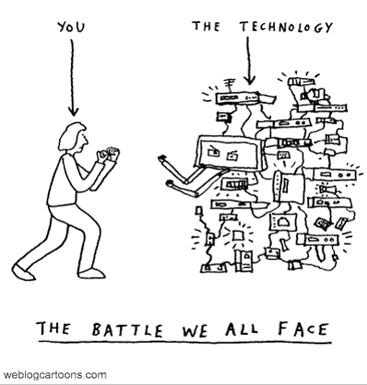
Research based on teaching and learning has been named the Cinderella of higher education. As a result, the scholarly endeavours of practitioners have less status than those associated with traditional disciplines.
This was suggested by Jenkins in Pedagogic Research at Brookes: Achievements, Opportunities and Questions (2002). Cinderella status was further supported by Cotton, Miller and Kneale in The Cinderella of academia: Is higher education pedagogic research undervalued in UK research assessment? (2018) while Bridges Disciplines and Discipline of Educational Research (2006) explores the its poor representation in the REF.
With my viva in six weeks, I’m preparing to defend the rationale for a practice-led doctorate. With this in mind, I challenge the notion of pedagogic research having lower status.
One way to achieve this is to revisit the story of Cinderella itself.

In the Uses of Enchantment, Bettelheim claimed Cinderella was the best known but least liked fairy tale (1976: 236). The exact origin of the story is unknown but it appears to have evolved from different locations and times. There are many versions, such as Perrault’s Cendrillon and the Grimm Brother’s Aschenputtel alongside multiple Disney renderings; each full of increasingly stereotypical images and ideas.
At its core, the Cinderella character is rejected and excluded. Living in ashes, her domestic role is unappreciated and degraded. However, without the work Cinderella undertakes, the running of the house and the welfare of her father, step-mother and step-sisters would suffer. Cinderella’s situation is presented as menial and lowly, yet she has responsibility for ensuring the basic components in life are firmly in place. Think the physiological foundation of Maslow.

The assumption is readers will equate the kitchen and scullery as inferior places which Cinderella needs to escape from. But her work really matters and this is the paradox. When the slipper fits and the handsome prince claims her for his bride, Cinderella is removed from domestic duties, thereby reaffirming the association between household chores and lowly status.
Yet in the unwritten future of the story, when Princess C lives in presumed royal luxury, somewhere in the lower levels of her new palatial habitat, there will be others like she once. Those with the role of keeping the home fires burning and raking through the ashes.
Cinderella will be replaced because the work she did was essential.

If the value of academic development activities were recognised in these changing and challenging times, then research into these practices might well increase in significance and status. Once this occurs, resources are more likely to be redirected into ensuring equality and longevity of opportunity.
If the analogy of practice-based research with Cinderella is to be considered robust, it requires rethinking. We should reconstruct the tale as being less about escaping from the hearth and more about re-establishing the heath as the heart and life force of the higher education institution, without which it would fall apart.
To survive, structures need solid foundations. Those who work and conduct research into their practice provide the evidence-based corner stones on which teaching and learning are based.
Cinderella is a rags to riches story. Regrettably, too often in the field of education and learning development, practitioners are seen as wearing rags. These compare poorly to the shining crowns of the academic disciplines.
This is unfair.

In reality, we are chameleons, skilled in adapting to the environment of the day, frequently working across disciplines, and in close collaboration with colleagues from a range of professional services. However, it’s the eclectic nature of what we do which can contribute to lacking a recognisable identity. We e have to carve our own, but are too often remembered for what we did rather than who we are.
We offer unique combinations of experience and knowledge from a variety of different sources. Our work creates bridges between academic theory and practice. We deal with pragmatic day-to-day problems while often supporting essential digital shifts with the later adopters of digital practice.
We’re full of tacit knowledge and practical wisdom but frequently lack the time and resources to convert this into theoretically informed writings and research projects.
All this reinforces the Cinderella paradox.

Cinderella might be a useful way to draw attention to the inequality of status around practice based research but the analogy needs to be used with care. The original story is dark, full of jealousy and vindictive relationships. In earlier undisneyfied versions, the sisters hack their feet to pieces to make the shoe fit.
While it’s a story which has multiple versions, I’ve yet to see one which challenges the assumption that kitchens and sculleries are not good places to be. It seems unfashionable to suggest that in reality they constitute the central heart of any household, and those who work there should be praised for tending the hearth and keeping the flames alive.

Most of all, the risk of devaluing a place, is seeing its inhabitants as being less. With regard to educational practitioners, this is especially not true. In my 20 years in higher education, its been colleagues working in these areas who’ve had the broadest understanding of the student experience, the most eclectic knowledge of issues around teaching and learning, and the greatest problems in having their scholarship recognised and valued.
Supporting research into practice is a viable way to give these practitioners a voice.
We have interesting ideas and important things to say.
Every day we stoke the higher education fires and more support with capturing and disseminating our own evidence-based stories would be greatly appreciated.

References
Bridges, D. (2006) The disciplines and discipline of educational research. Journal of Philosophy of Education, 40(2), 259-272
(2018) The Cinderella of academia: Is higher education pedagogic research undervalued in UK research assessment?, Studies in Higher Education, 43:9, 1625-1636,
Jenkins, A. 2002. “Pedagogic Research at Brookes: Achievements, Opportunities and Questions.” Teaching Forum 50 (Autumn): 3–6


















































